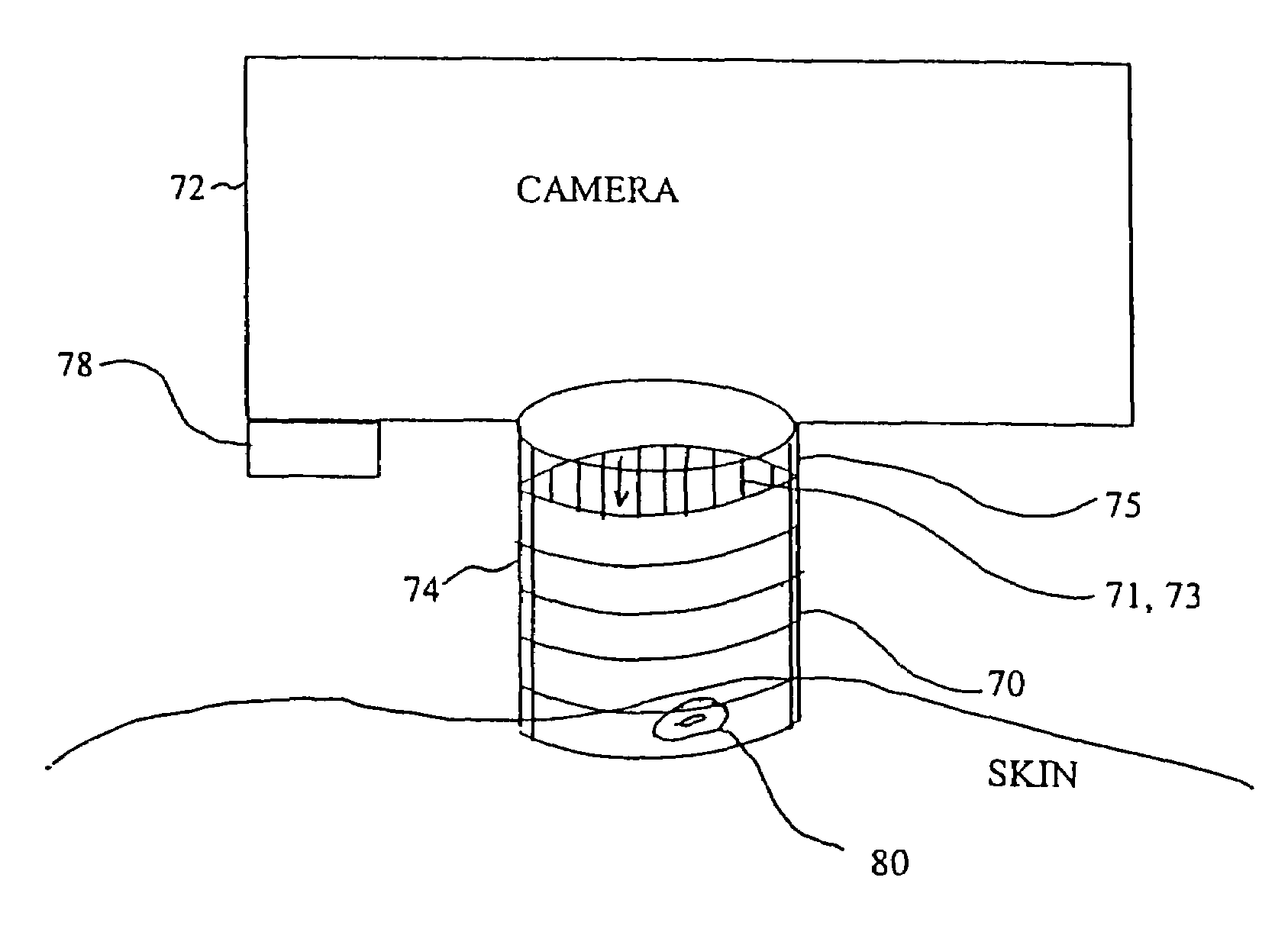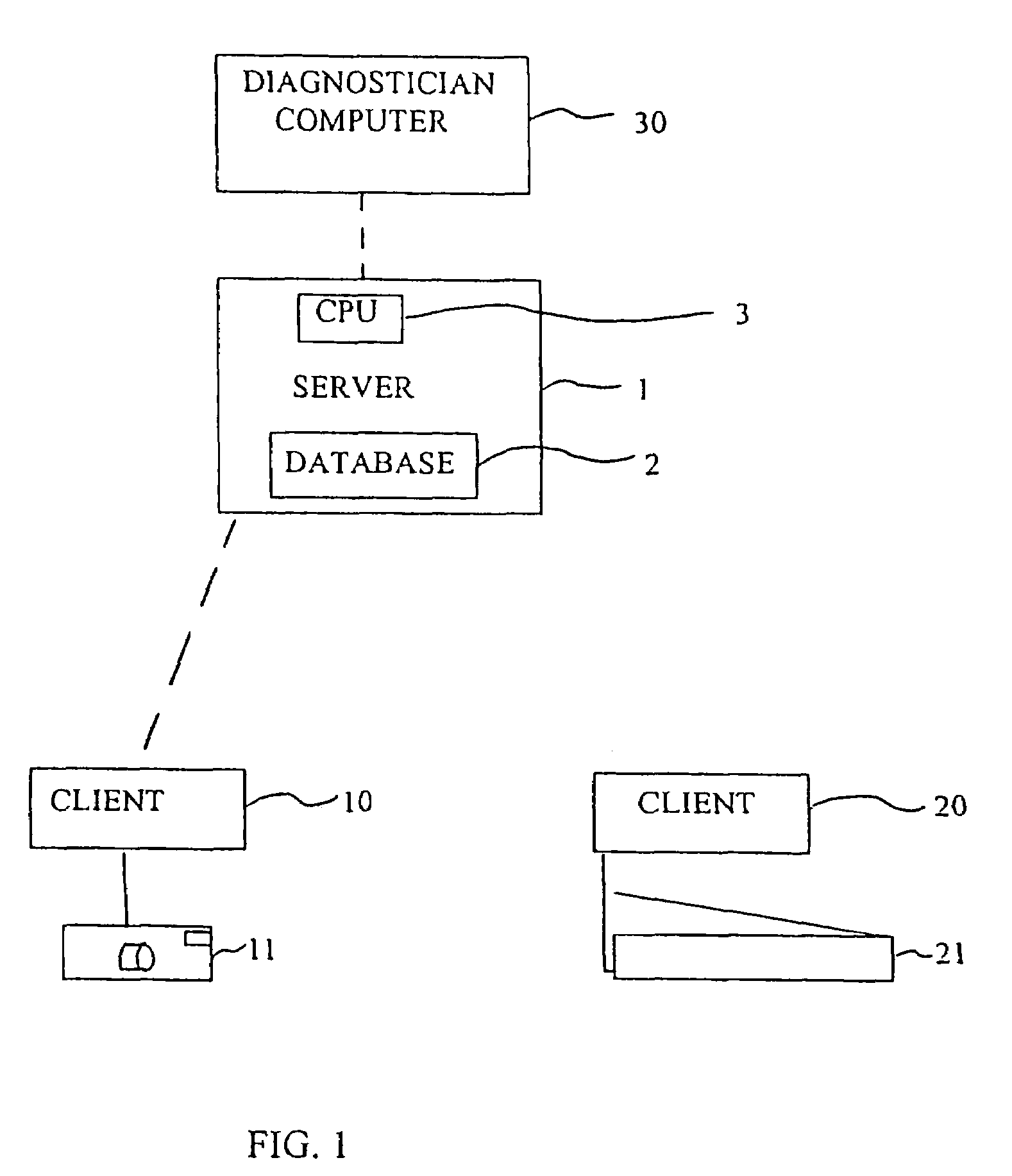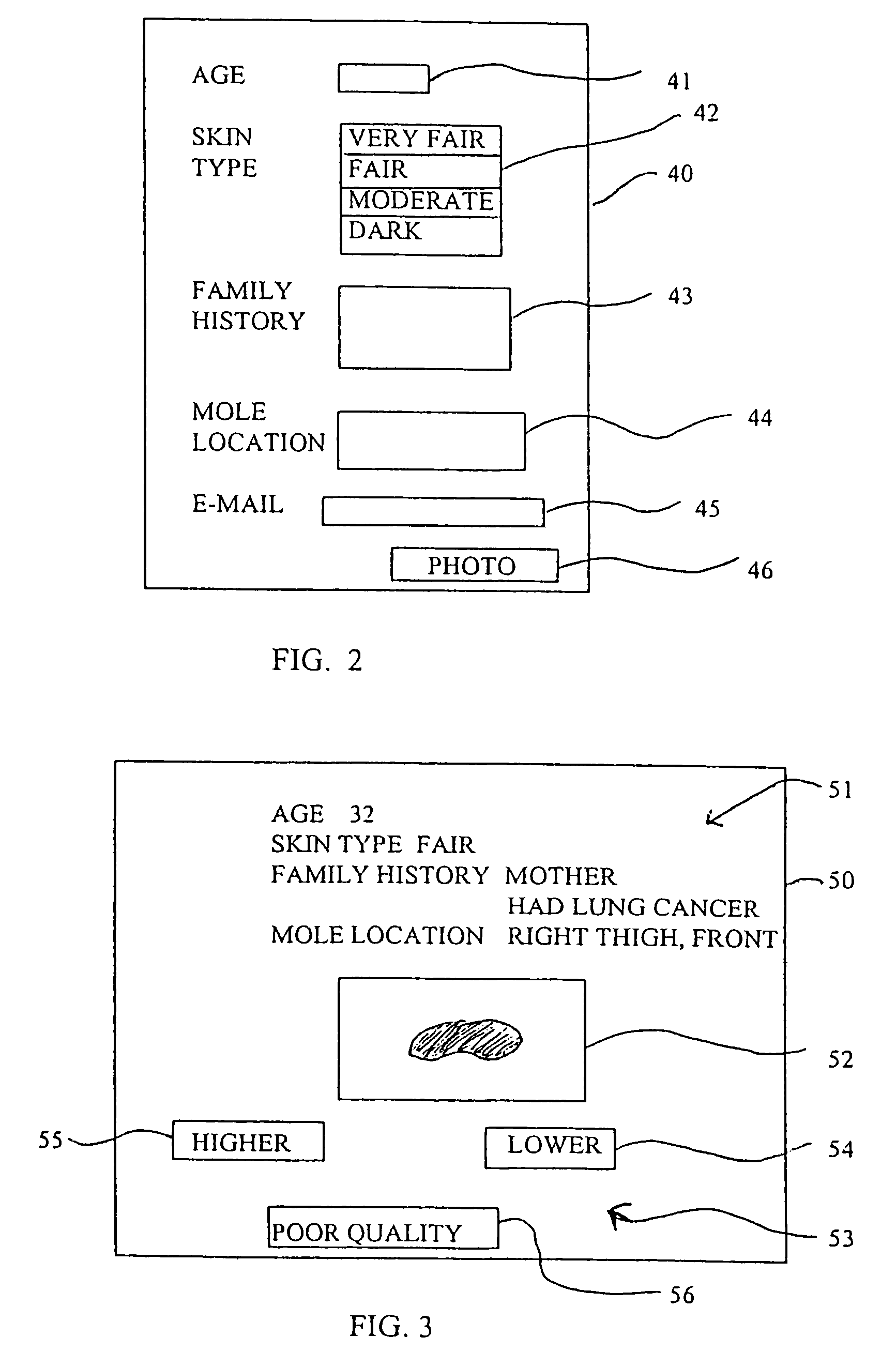Method and device for skin cancer screening
a skin cancer and screening technology, applied in the field of dermatology, can solve the problems of insufficient training of primary care physicians to perform it well, too many unnecessary biopsies, and inability to detect early melanomas, so as to improve the access of potential patients and improve the efficiency and cost-effective screening of large patient populations
- Summary
- Abstract
- Description
- Claims
- Application Information
AI Technical Summary
Benefits of technology
Problems solved by technology
Method used
Image
Examples
Embodiment Construction
[0059]FIG. 1 shows a server 1 having a database 2 and a central processing unit 3. The database 2 may be for example MICROSOFT ACCESS and the CPU a PENTIUM III processor.
[0060]Server 1 is accessible, for example through the Internet and ISPs by clients 10, 20. Each client may view a page of information stored on the server 1, such as first submission page 40 shown in FIG. 2. As defined herein a page of information may be single or more than one page of information viewable on a screen. First submission page 40 includes data input fields 41, 42, 43, 44 and 45, for submitting age, skin type, family and personal history, pigmented lesion location and an e-mail address, respectively. Risk factor questions may be asked, as can questions about the lesion, such as whether the lesion has changed color or is growing. The data input fields may be blank spaces or may be a selection area with predefined choices, such as shown with skin type data input field 42. Other data input fields or differ...
PUM
 Login to View More
Login to View More Abstract
Description
Claims
Application Information
 Login to View More
Login to View More - R&D
- Intellectual Property
- Life Sciences
- Materials
- Tech Scout
- Unparalleled Data Quality
- Higher Quality Content
- 60% Fewer Hallucinations
Browse by: Latest US Patents, China's latest patents, Technical Efficacy Thesaurus, Application Domain, Technology Topic, Popular Technical Reports.
© 2025 PatSnap. All rights reserved.Legal|Privacy policy|Modern Slavery Act Transparency Statement|Sitemap|About US| Contact US: help@patsnap.com



